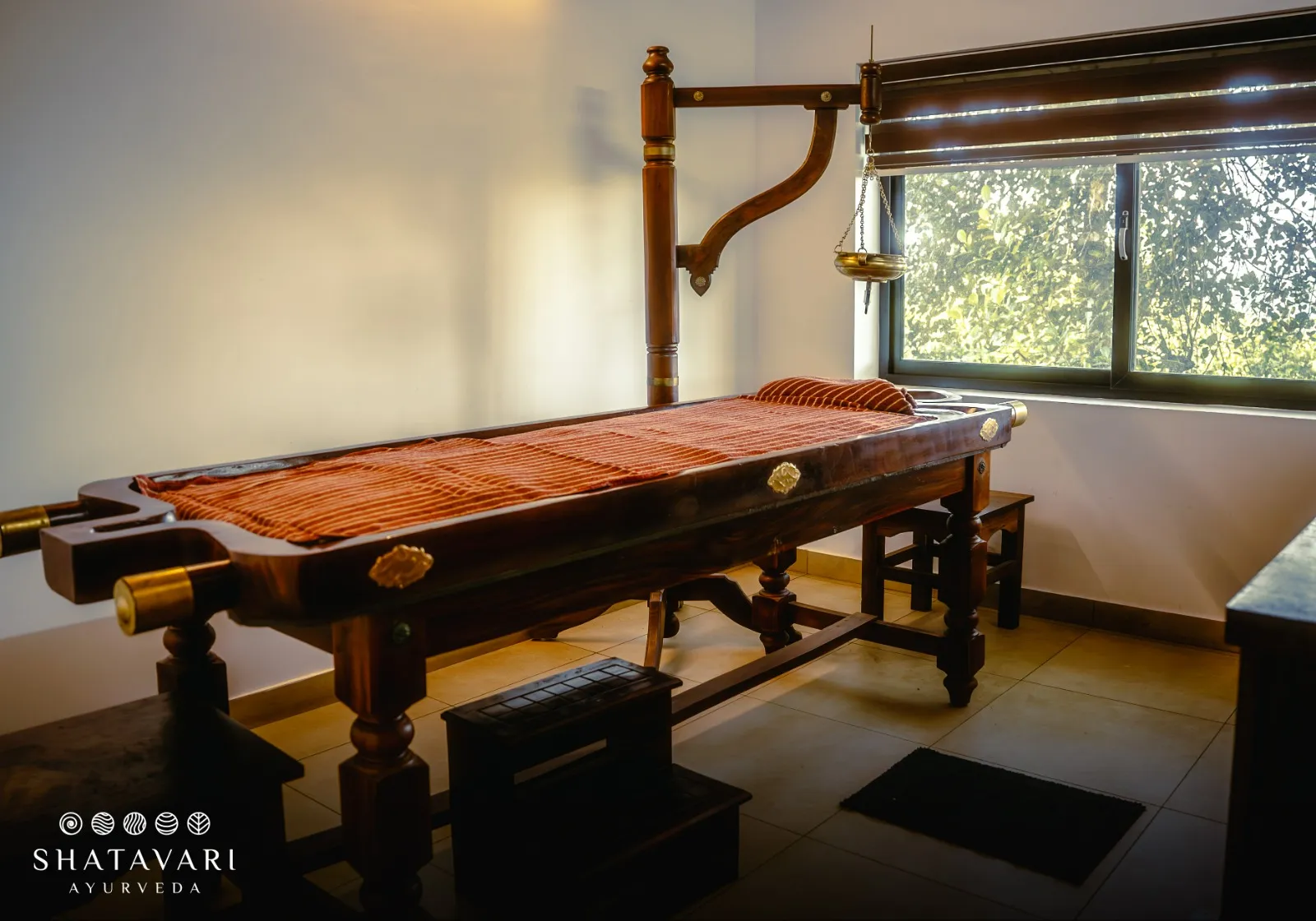
Panchakarma: Five Ayurvedic Therapies for Effective Detoxification
Feb 11, 2025
Panchakarma is a detox regimen from Ayurveda that seeks to remove toxins and restore healthful balance through the use of five main therapies. This system is based in Ayurveda, one of the oldest holistic medical systems. It uses natural methods to bring balance to the body by regulating the three Doshas – Vata, Pitta, and Kapha – and fostering overall well being. Whether you are looking for solutions to persistent health issues or want to stay healthy, Panchakarma provides restoration and balance to the body.
Introduction
Panchakharma in Sanskrit translates to “Five Actions.” It is meant to describe a combination of five distinct therapies which directly aim to remove toxins, or ama, and restore balance to the system. Being deeply rooted in Ayurveda, Panchakarma is used for more than detoxification—it fosters well being and holistic healing. In today’s world where people are more stressed than ever, this form of detoxification can be of utmost importance. And with more and more people turning towards natural means of healing, the relevance of Ayurvedic detox methods is becoming increasingly popular.
Understanding Panchakarma
The term “Panchakarma” can be interpreted as “Pancha” (five) and “Karma” (actions). This five-fold therapy is a part of the Ayurvedic system, and it aims at both prevention and cure for different diseases. Panchakarma, in addition to alleviating symptoms, resolves the underlying problem, which is the stored toxins and imbalance of the Doshas in the body. There are several misconceptions and myths that surround it, but in fact, it is a process that works synergistically with the body to achieve homeostasis of the mind and body.
The Five Main Therapies in Panchakarma
Panchakarma is composed of five major purification therapies, which are its central components. Each therapy is aimed at certain bodily systems and the imbalances that must be corrected:
Vamana (Therapeutic Emesis)
Purpose: To remove toxins through therapeutic vomiting.
Focus: Congestion and excess mucus, especially due to Kapha-related disorders.
Virechana (Purgation Therapy)
Purpose: Cleansing of the small intestine and liver by purging.
Focus: Imbalances in Pitta and aiding healthy digestion.
Basti (Enema Therapy)
Purpose: Administration of herbal and oil enemas.
Focus: Addressing Vata disorders with joint and nervous system support.
Nasya (Nasal Administration)
Purpose: Use of medicated oils or powders through the nasal passages.
Raktamokshana (Bloodletting Therapy)
Purpose: Removal of toxins from the blood for purification.
Focus:Treatment of skin diseases and disorders related to toxins in the blood, as well as relief for sinus problems and headaches.
Additional Supporting Procedures
Beyond the primary therapies, there are a few additional procedures fundamental to the preparatory and supplementary stages of the Panchakarma process:
- Snehana (Oleation Therapy): The use of lubricant medicated oils on both the surface and inside parts of the body to facilitate easier excretion of toxins.
- Swedana (Fomentation or Steam Therapy): Sweating-inducing herbal steaming that helps open channels for effective removal of toxins.
- Dietary Regulations: Light and easily digestible meals that support the detox process.
- Lifestyle Adjustments: Incorporating yoga, meditation, and plenty of rest to enhance the body’s ability to detox and rejuvenate.
Key Benefits of Panchakarma
This therapy treats the whole person—body, mind, and spirit—resulting in benefits that extend beyond mere detoxification. Key benefits include:
- Efficient Detoxification: Removal of toxins leads to better organ function and overall health.
- Enhanced Digestion & Metabolism: Restoration of normal digestive functions and improved metabolic processes.
- Boosted Immunity: Strengthened body defenses increase tolerance to diseases.
- Mental Clarity & Stress Reduction: A relaxed mind and reduced stress due to the integrative healing approach.
- Skin Rejuvenation & Anti-Aging: Purification helps achieve clearer and more youthful skin.
- Weight Management & Overall Vitality: Regulation of weight and revitalization of the body for increased energy levels.
Step-by-Step Panchakarma Process
Effective Panchakarma treatment involves a stepwise approach split into four major phases:
- Initial Consultation: A detailed dosha assessment along with a review of the existing mulavrudha is conducted to devise an individualized treatment strategy.
- Pre-Purification (Purva Karma): Preparatory steps like Snehana and Swedana prepare the body for deeper purification.
- Main Purification (Pradhana Karma): Implementation of the selected Panchakarma procedure (Vamana, Virechana, Basti, Nasya, or Raktamokshana).
- Post-Purification (Paschat Karma): Rejuvenation through gradual reintroduction of diet, herbal tonics, and lifestyle changes to sustain the benefits.
Who Should Consider Panchakarma?
Ayurvedic Panchakarma is not a generalized treatment; it is best suited for specific target audiences and conditions:
- Ideal Candidates: Individuals suffering from chronic health concerns, lifestyle issues, or those looking to perform a seasonal cleanse.
- Contraindications: Women who are pregnant, very young, elderly, or those suffering from acute illnesses may not be advised to undergo Panchakarma.
- When to Opt for It: Many experts recommend undergoing Panchakarma during seasonal changes when the body is naturally shifting.
What You Need To Know About The Process of Panchakarma
Understanding what to expect from the treatment can greatly enhance your experience:
- Experience During Treatment: Most patients may experience physical and emotional responses as tissues expel toxins, including mild pain, discomfort, or emotional release (detox symptoms).
- Lifestyle Changes: A light, nourishing diet and sufficient rest are vital during the detox phase.
- Recovery After Treatment: An essential recovery phase includes prescribed follow-up visits, dietary protocols, and gradual normalization of foods.
- Your Body Will Thank You Later: With proper aftercare, the treatment can result in sustained improvements in energy levels, mental clarity, and overall health.
To Get the Most From Panchakarma, Note These Recommended Actions
Maximize the benefits of Panchakarma by following these recommended actions:
- Choose a Notable Ayurvedic Center: Select clinics with certified Ayurveda practitioners who have a documented track record in Ayurvedic medicine.
- Ask Qualified Experts: Obtain advice tailored to your specific doshic constitution for effective treatment.
- Establish a Supportive Routine: Incorporate meditation, gentle yoga, and self-care activities to maintain mental balance.
- Follow Prescribed Diet and Supplements: Adhere strictly to the dietary restrictions and herbal supplement recommendations provided by your practitioner.
- Listen to Your Body: Allow ample time to recuperate while staying attuned to your body’s signals.
Frequently Asked Questions (FAQs)
Conclusion
Panchakarma embodies the ancient wisdom of Ayurveda. It is a holistic strategy built on the principles of restoring balance, detoxifying the body, and rejuvenating the mind. Through the systematic process of cleansing and rejuvenation, Panchakarma offers a natural path toward wellness and health restoration. If you are seeking a balanced, holistic approach to health, consult a qualified Ayurvedic practitioner for guidance.



